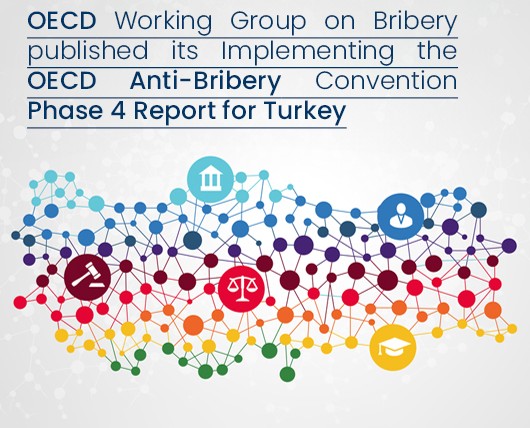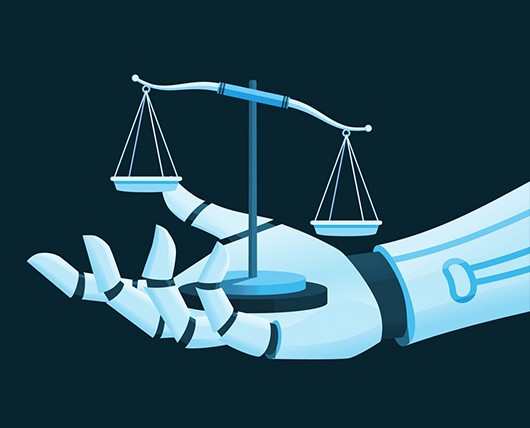Abstract
Corruption causes some crises, but others are inevitable. However, the effects of all of them are made far worse by corruption. Social problems and inequalities are thus exacerbated, justice and rule of law are undermined, and all of this increases social turmoil and security risks. Systemic corruption, fraud and mismanagement result in a lack of crisis preparedness for the prevention of certain crises or mitigation of unavoidable disasters. When natural disasters inevitably strike or other emergencies arise, inadequate preparedness or responses result in government distrust and legitimacy crises, which aggravate problems and cause further victimization.This paper analyzes the COVID-19 crisis through the analytical lenses of “lawful but awful” practices and of “institutional corruption”. In this way, it emphasizes the need to pay attention to negative consequences some political, economic or other activities have on society, even though they are allowed by the law or promoted by governments. This form of analysis can guide debates on public policy and reform: if something is not right, we need to fix it.
Key words: COVID-19 crisis, corruption, financial crimes
Introduction
Legal, policy and institutional developments over the last couple of decades gave some reasons to think that global efforts would make a positive different and to be optimistic about the future of corruption control and quality of life around the world. Firstly, substantial resources were devoted to national, regional and international anti-corruption efforts alone or in combination with the agendas of economic development, democratization, support for civil society, public procurement regulation, judicial independence, governance, human rights and the fight against illicit financial frauds and serious transnational crime. Secondly, we have witnessed the introduction of numerous binding, soft-law and good-practice international standards amounting to an extraordinary body of conventions and other normative texts framing policy and practice in both the public and private sector spheres. Thirdly, many institutional reforms aiming at the creation or strengthening of independent regulatory, supervisory, preventive and law enforcement bodies added to the hope and expectations that we can do a lot better (Passas, 2014; Passas and Vlassis, 2007).
However, the results have been underwhelming or downright disappointing, as laws go unenforced or used discriminatorily, institutions get weakened or fail, processes become over-bureaucratized, formality often trumps essential objectives, and serious instances of corruption frequently get neglected or go unpunished (Bullough, 2022; Chayes, 2020; Johnston and Fritzen, 2021; Michel, 2021; Mungiu-Pippidi, 2015; Passas, 2020; Persson et al. 2012; Vogl, 2021).(Bullough 2022; Michel 2021; Vogl 2021)
Too much law, complexity, vested interests and lack of genuine political will have led to temporary results, reversible successes, lower trust in institutions and governments, waste of resources, demoralization, brain drain and growing inequalities and inequity. Values, overall purposes, and ethics are misaligned with compliance and anticorruption practice. The pandemic illustrated magnified and added new challenges to this context.It became an important test in the quality of governance at the local, national and international level for both public and private entities.
This paper proposes a theoretical framework for the analysis of this and other natural or human-made emergencies by drawing on the concepts of lawful but awful practices, institutional corruption, and criminogenic asymmetries. To illustrate this theoretical approach, it reviews some of COVID-19challenges in terms of preparedness, response and future potential effects of new measures.
Theoretical framework
The concepts of corruption and governance are the subject of long debates and controversies the review of which is beyond our scope here. In order to address an unproductive overreliance on law and legal definitions, for our purposes, corruption is the abuse of public or private power, office or authority for private benefit. It occurs when people prioritize de facto their own interests at the expense of the organizational or collective goals they are elected or appointed to serve. Such disservice to the common good undermines the quality of governance, gives rise to and exacerbates social problems, and undercuts society’s capacity to deal with emergencies of all types, thereby adding to the victimization especially of fragile and vulnerable communities.
Governance can be understood as the set of institutions, norms and processes through which interests emerge, are acted out and conflicts between them are resolved in a given social group. It encompasses laws, principles, rules, processes and programs that frame and promote goals, demands and policies as they shape social actors’ expectations, practices, interactions, conflicts resolution in local, national and world affairs. So, the unit of analysis can be an organization, corporation, industry, city, country, region or indeed the global community.
A growing body of literature focuses on corporate and government practices that constitute corruption as defined above, even though they may be legal, encouraged or even subsidized by the state, many times signaling a disparity between legality and legitimacy(Passas, 2005; Passas and Goodwin, 2004; Thompson, 2018; Wedel, 2009, 2016).Transcending the intent or even knowledge of social actors, these works point to adverse social, economic, security, health and environmental consequences. This social harm or negative externalities are occasionally far worse than acts that are in fact criminalized.In instances characterized as “institutional corruption”, a) organizational or institutional purposes are undermined in practice by certain influences, decisions, actions or activities, or b) the trust and confidence in a given institution is damaged(Amit et al. 2017; Lessig, 20132).The governance issues at the heart of this literature are that collective goals are frustrated, the common good is not advanced, and those responsible get away with it.
The yardstick is not merely on what an individual or organizational actor did, but also what they could and ought to have done, but they did not do. Positive actions as well as omissions matter, because they have consequences (see for example the debate on Donald Trump’s role and duties regarding the January 6,2021 insurrection). They matter also because they affect collective objectives and purposes, even when actors are not fully aware of the consequences of their actions; that is, regardless of specific individual responsibility or knowledge. The impact on public policy and interest is significant and goes beyond criminal or other liability in courts. The point is that things are not going as desired, planned or anticipated and need to be fixed; policy priorities are wrong and must be rearranged. The collective or organizational goals people have been appointed or elected to promote are undercut in tangible, observable, most often measurable ways. In other words, the quality of governance leaves room for improvement, and it is our duty a) to reveal and documents such adverse consequences; b)to problematize what may be taken for granted or regarded as positive due to some short-term benefits, c) to articulate the ways in which different actors contribute and need to be held accountable (legally or socially) and d) to actively seek a rethinking of priorities and redesign of public policy.
Health-related negative externalities preceding COVID-19 include compromising legislative capacity to protect the public from unsafe drugs(Light et al., 2013), the non – publication of adverse effects of drugs on trial (Goldacre, 2013) or allowing the manufacture and export of products banned domestically due to their known harm (Cashman, 1989).
These challenges can be analyzed through the concept of “criminogenic asymmetries” (Passas, 1999, 2000, 2002), which refers to structural discrepancies, mismatches and inequalities in the realms of the economy, law, politics, and culture. Asymmetries are conducive to crime 1) by fueling the demand for illegal goods and services; 2) by generating incentives for people and organizations to engage in illegal practices; and 3) by reducing the ability of authorities to control crime. Processes of globalization bring into contact diverse systems and actors thereby multiplying, activating and intensifying the criminogenic potential of these asymmetries.The criminogenic effect is that new opportunities for crime and corruption are created, motives to avail of such opportunities emerge or proliferate, while social controls are weakened.
This analytical approach has been applied fruitfully to the study oflawful but awful and corrupt practices as well as of illegal markets, transnational crime, cybercrime, and extremism (Arroyo-QuirozandWyatt, 2019; Bracci et al. 2021; Dolliver and Love, 2015; Loibl, 2019; Passas, 1998; Pons-HernandezandWyatt, 2022; Twyman-Ghoshal, 2021; Twyman-Ghoshal and Passas, 2015; Zabyelina, 2014).
Please click for the continuation of the article
Author: Nikos Passas – Professor of Criminology and Criminal Justice, Northeastern University, School of Criminology and Criminal Justice, Boston
Opinions and comments in the articles belong to the author or authors and do not reflect the views of the Ethics and Reputation Society on the subject.








Yapay Zeka ve Etik Değerler
Veri İhlali Bağlamında Whistleblowing (Bilgi İfşası)
Çalışanların Sır Saklama Yükümlülüğü ve Gizlilik Sözleşmeleri
Rekabet Hukukunda Yepyeni Bir Perspektif: TOPLUMSAL CİNSİYET
Yapay Zeka ve Etik Değerler
OECD Working Group on Bribery published its Implementing the OECD Anti-Bribery Convention Phase 4 Report for Turkey
Rekabet Hukukunda Yepyeni Bir Perspektif: TOPLUMSAL CİNSİYET
OECD’nin Rüşvetle Mücadele Sözleşmesi’nin Uygulanmasına İlişkin 4. Aşama Raporu: Türkiye’nin Gelişme Sağladığı Alanlar ve Eksiklikleri